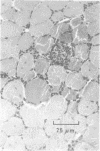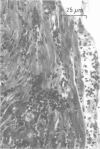Abstract
Immunity against lethal, bloodstream forms of Trypanosoma cruzi was achieved in mice by preinoculation of approximately equal to 10(5) culture epimastigotes of an attenuated T. cruzi strain (TCC). The risks of TCC inoculation in terms of pathogenicity or eventual increase in virulence of TCC progeny were evaluated. No pathogenic parasites could be selected from TCC progeny by either mouse, triatome, or culture passages. Immunizing doses of live TCC did not induce in adult mice alterations resembling chronic Chagas' disease, as judged by patterns of mortality, tissue damage, autoantibodies, or parasite recovery. On the basis of the same criteria, However, a remarkable similarity could be established between the disease caused in mice by inoculation of low numbers (10(2)) of pathogenic trypomastigotes and human chronic Chagas' disease. Although patent parasitemias were never revealed in fresh blood mounts obtained from TCC-inoculated mice, a few hemocultures and xenodiagnoses gave positive results, particularly soon after inoculations at birth. The parasites recovered by either method remained in the attenuated, epimastigote stage. In rabbits, no local lesions, fever, weight loss, or histopathological alterations were detected after subcutaneous inoculation of 10(7) TCC organisms, although one fifth of the animals yielded positive hemocultures of epimastigotes. The contrasting host response to cultured epimastigotes as compared with blood trypomastigotes indicates that, in experimental Chagas' disease, immunoprotection is not necessarily associated with immunopathology.
Full text
PDF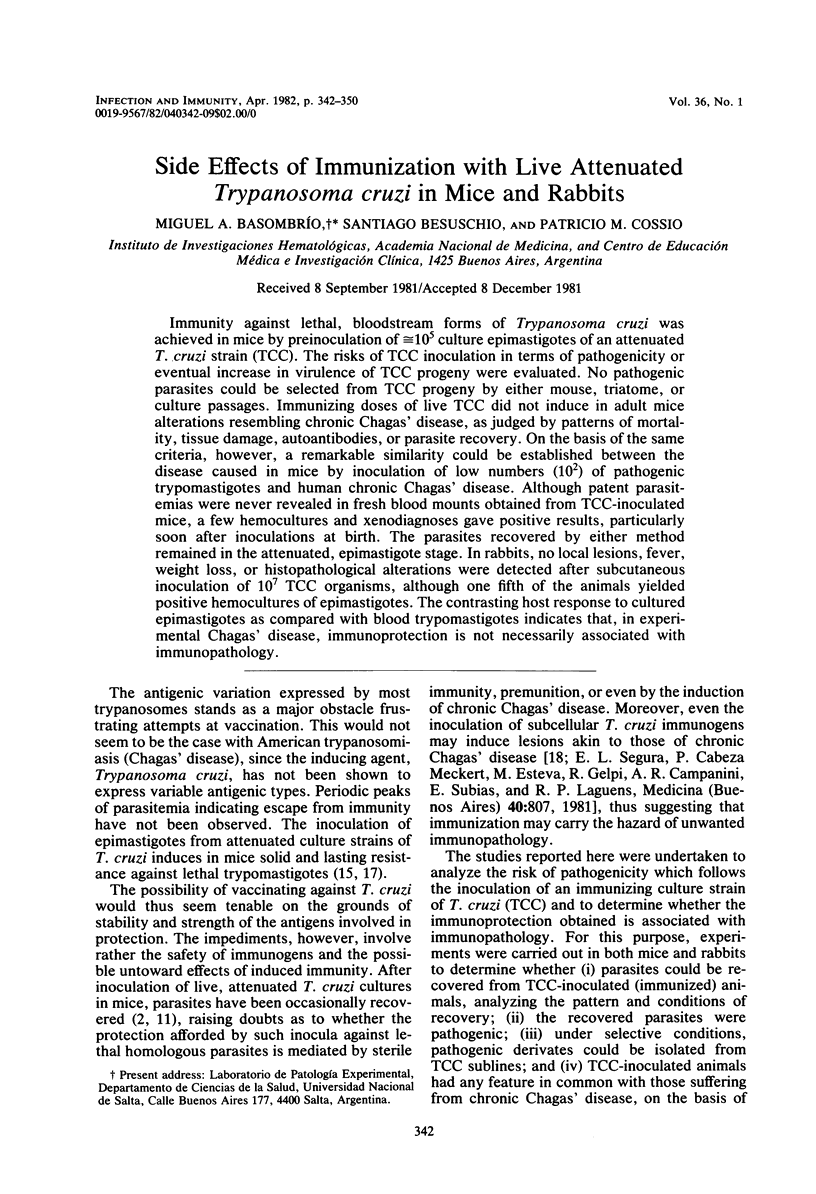
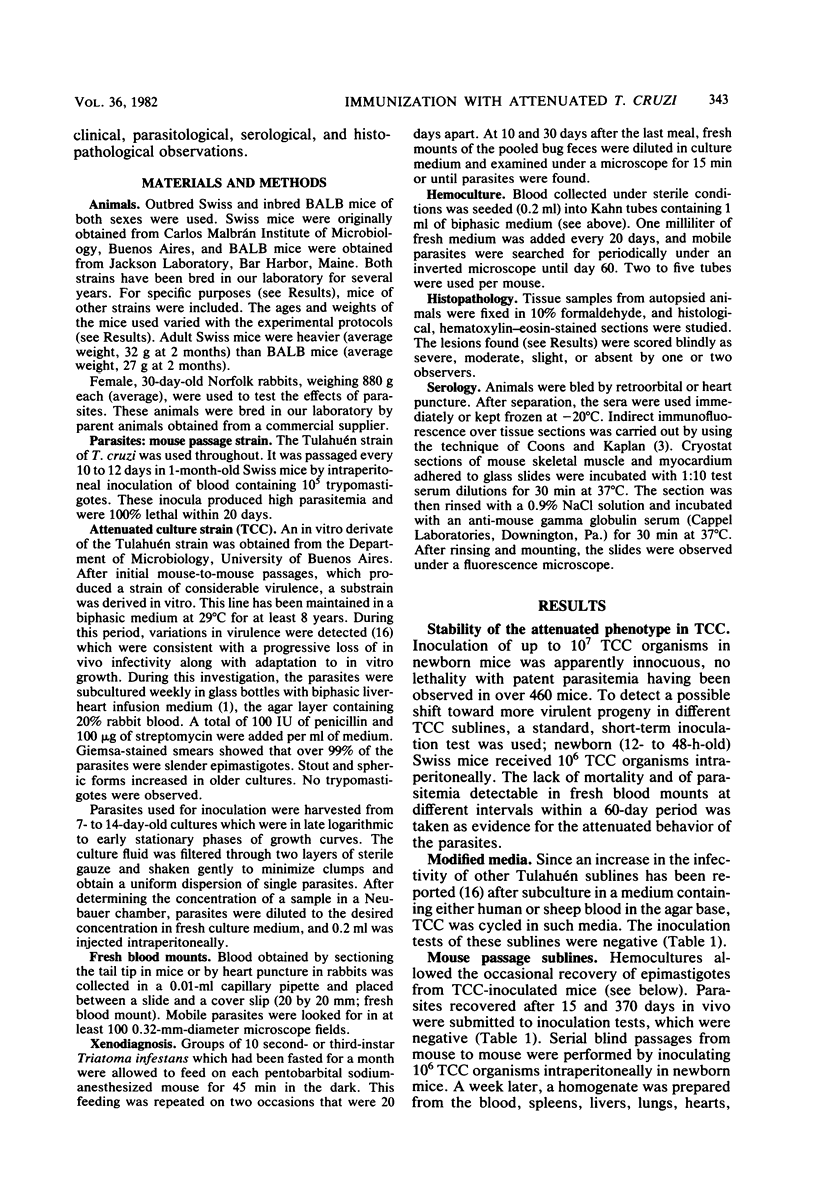
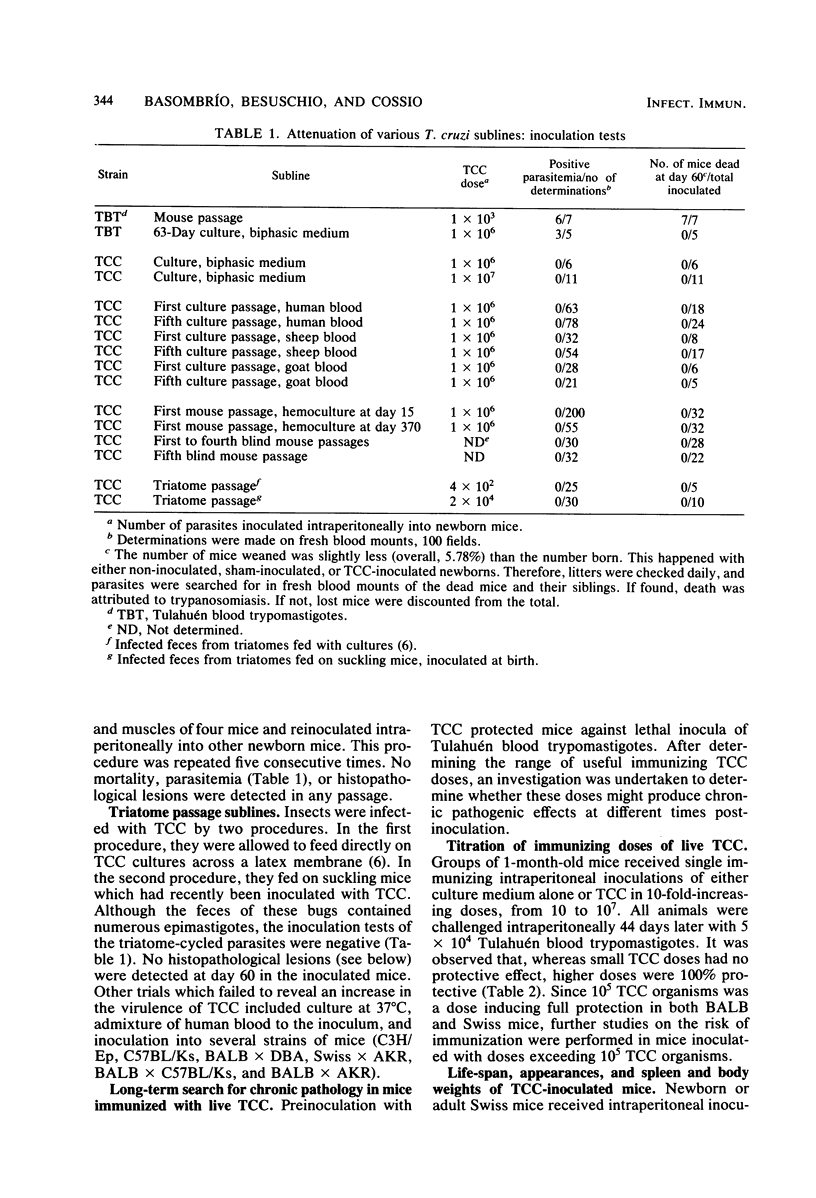
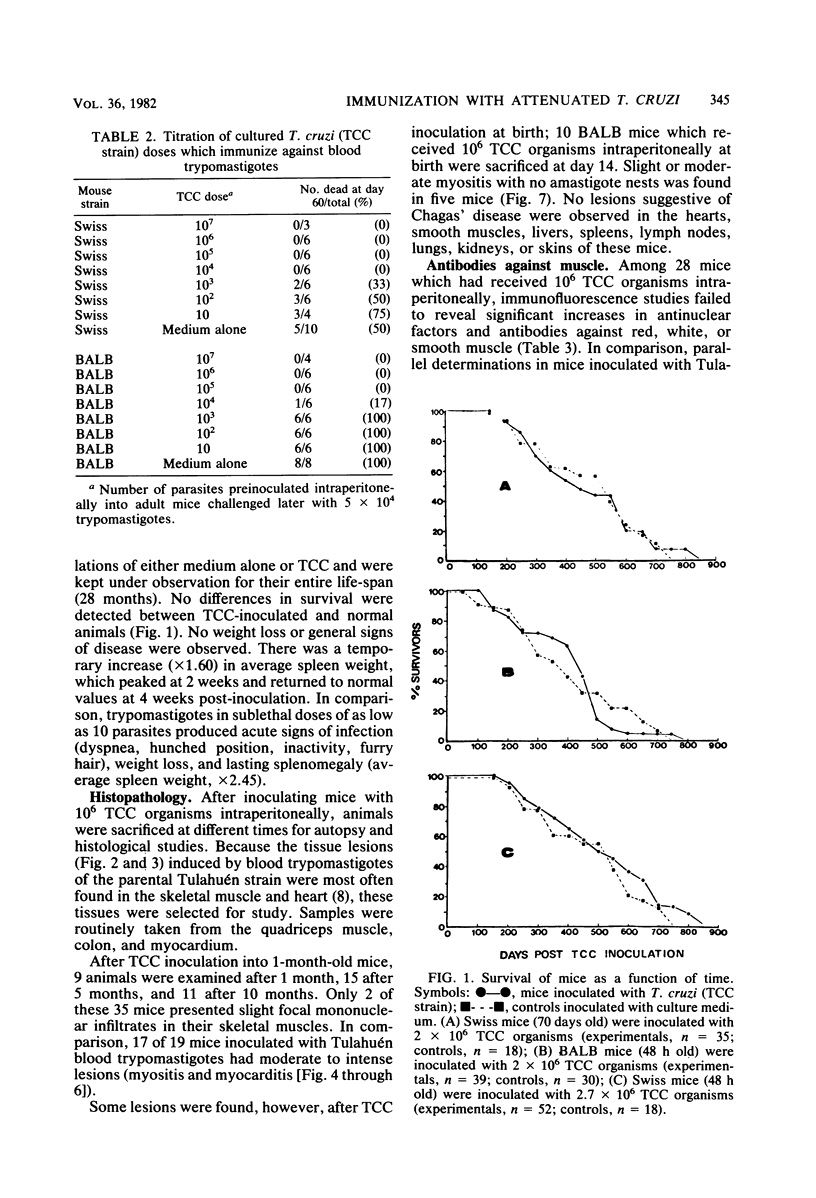
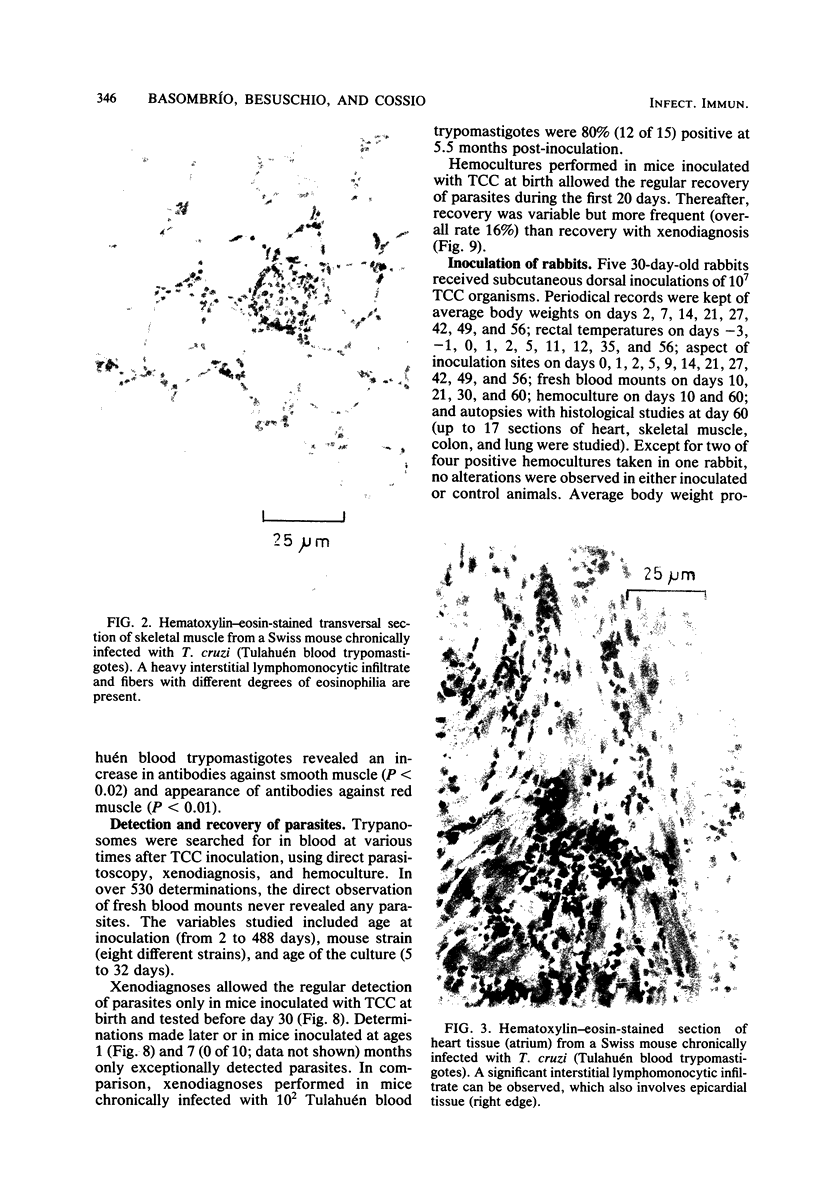
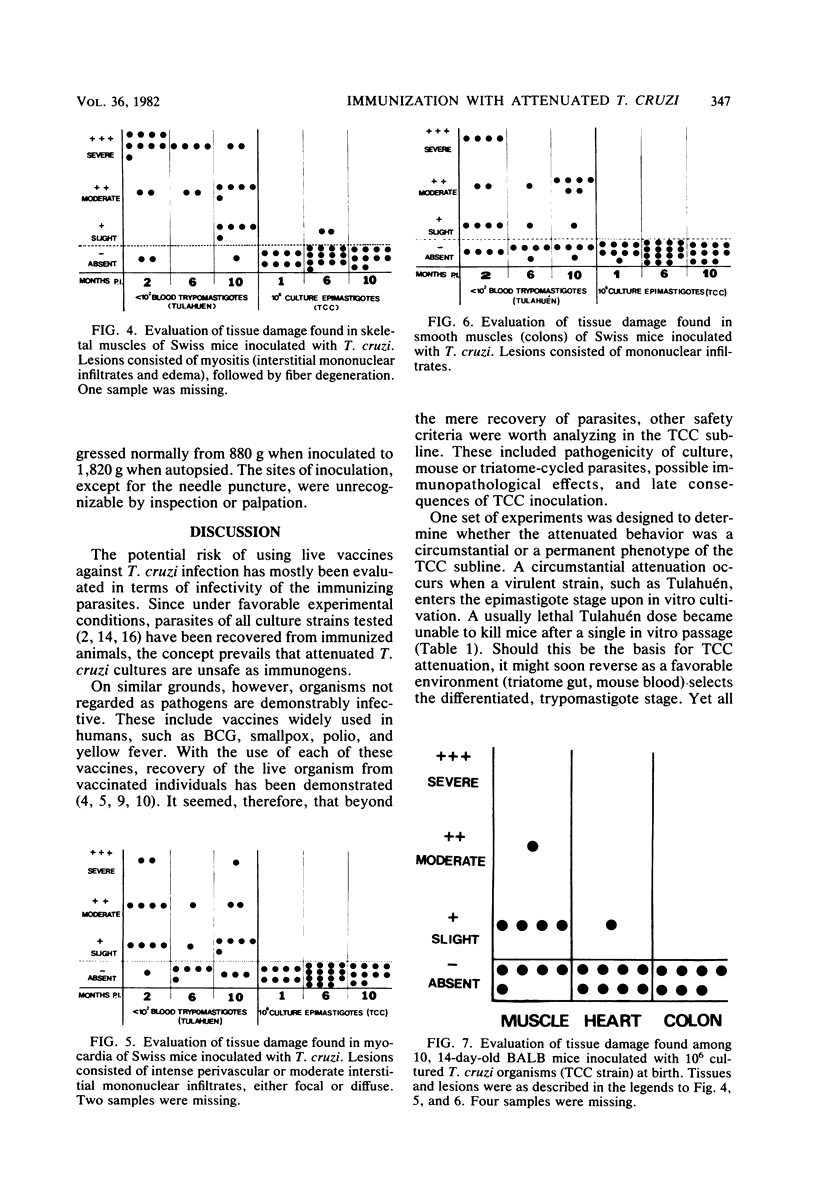
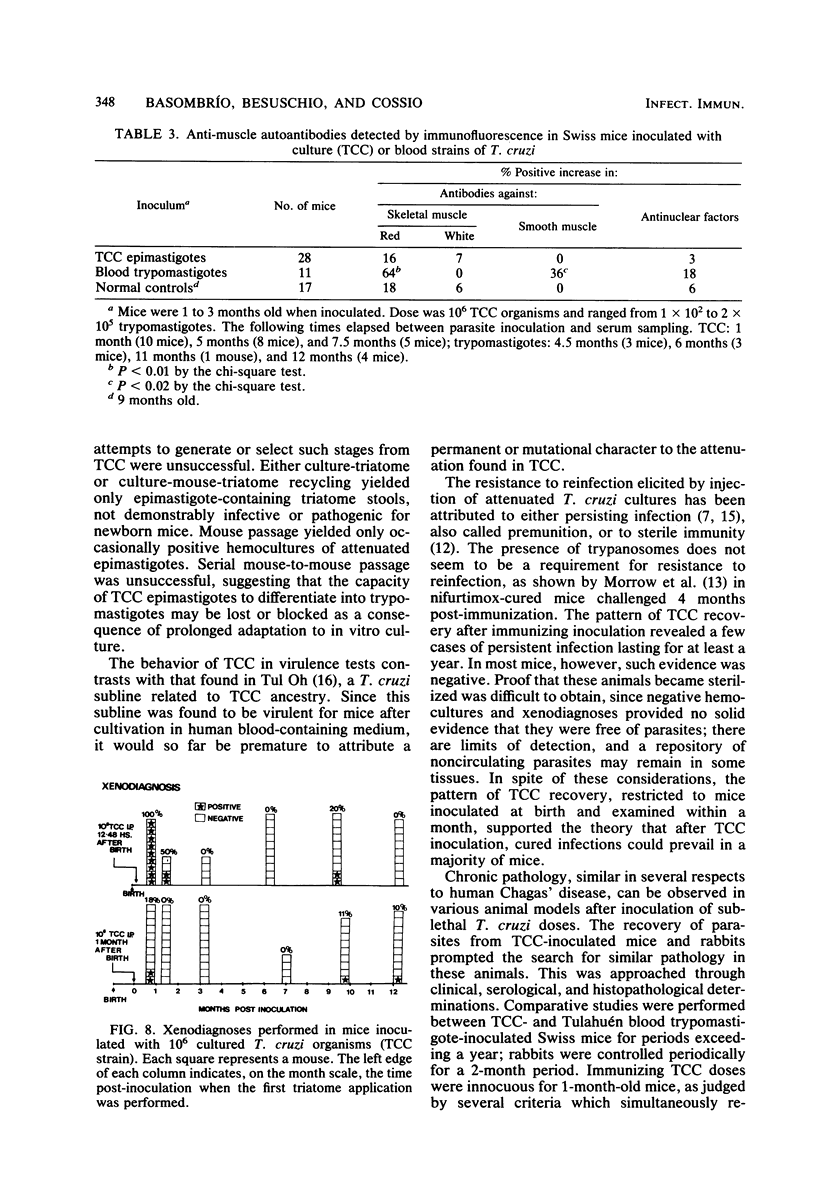

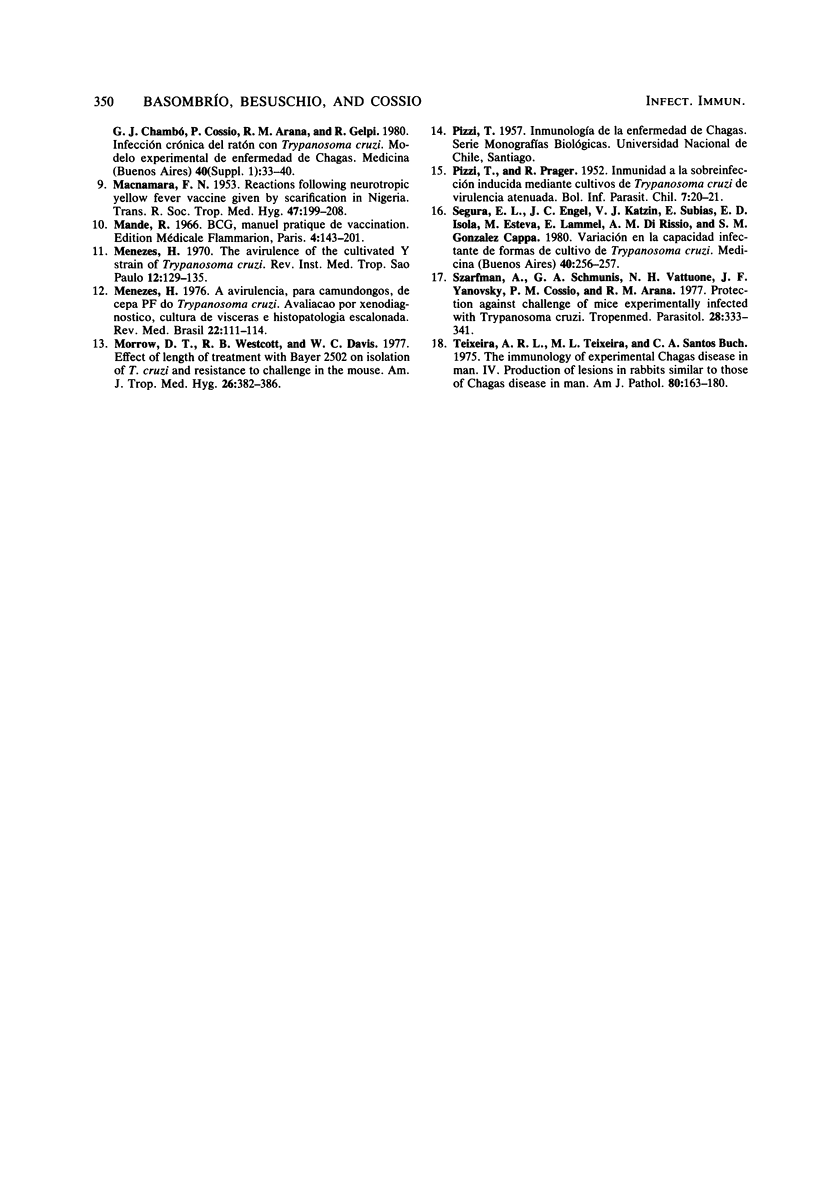
Images in this article
Selected References
These references are in PubMed. This may not be the complete list of references from this article.
- CONNOLLY J. H., DANE D. S., DICK G. W., FISHER O. D., MCKEOWN F. Vaccination against poliomyelitis with live virus vaccines. II. A trial of SM type I attenuated poliomyelitis virus vaccine. Br Med J. 1957 Jan 12;1(5010):65–70. [PMC free article] [PubMed] [Google Scholar]
- COONS A. H., KAPLAN M. H. Localization of antigen in tissue cells; improvements in a method for the detection of antigen by means of fluorescent antibody. J Exp Med. 1950 Jan 1;91(1):1–13. doi: 10.1084/jem.91.1.1. [DOI] [PMC free article] [PubMed] [Google Scholar]
- Chiari E. Infectivity of Trypanosoma cruzi metacyclic trypomastigotes from cultures kept in laboratory for different periods of time. Rev Inst Med Trop Sao Paulo. 1974 Mar;16(2):61–67. [PubMed] [Google Scholar]
- De Bronia D. I., Montamat E. E., Aeberhard E. E., Segura E. L. Composicion lipídica del Trypanosoma cruzi. Medicina (B Aires) 1976;36(4):294–298. [PubMed] [Google Scholar]
- HALL G. F., CUNLIFFE A. C., DUDGEON J. A. Prolonged generalised vaccinia. J Pathol Bacteriol. 1953 Jul;66(1):25–38. doi: 10.1002/path.1700660105. [DOI] [PubMed] [Google Scholar]
- KAGAN I. G., NORMAN L. Immunologic studies on Trypanosoma cruzi. III. Duration of acquired immunity in mice initially infected with a North American strain of T. cruzi. J Infect Dis. 1961 Mar-Apr;108:213–217. doi: 10.1093/infdis/108.2.213. [DOI] [PubMed] [Google Scholar]
- MACNAMARA F. N. Reactions following neurotropic yellow fever vaccine given by scarification in Nigeria. Trans R Soc Trop Med Hyg. 1953 May;47(3):199–208. doi: 10.1016/0035-9203(53)90003-0. [DOI] [PubMed] [Google Scholar]
- Menezes H. A avirulência, para camundongos, da cepa PF do "Trypanosoma cruzi". Avaliaço por xenodiagnóstico, cultura de vísceras e histopatologia escalonada. AMB Rev Assoc Med Bras. 1976 Apr;22(4):111–114. [PubMed] [Google Scholar]
- Menezes H. II. The avirulence of the cultivated Y strain of Trypanosoma cruzi. Rev Inst Med Trop Sao Paulo. 1970 Mar-Apr;12(2):129–135. [PubMed] [Google Scholar]
- Morrow D. T., Wescott R. B., Davis W. C. Effect of length of treatment with Bayer 2502 on isolation of Trypanosoma cruzi and resistance to challenge in the mouse. Am J Trop Med Hyg. 1977 May;26(3):382–386. doi: 10.4269/ajtmh.1977.26.382. [DOI] [PubMed] [Google Scholar]
- PIZZI T., PRAGER R. Inmunidad a la sobreinfección inducida mediante cultivos de Trypanosoma cruzi de virulencia atenuada; communicación preliminar. Bol Inf Parasit Chil. 1952 Apr-Jun;7(2):20–21. [PubMed] [Google Scholar]
- Segura E. L., Engel J. C., Katzin V. J., Subías E., de Isola E. D., Esteva M., Lammel E., Di Rissio A. M., González Cappa S. M. Variación en la capacidad infectante de formas de cultivo del Trypanosoma cruzi. Medicina (B Aires) 1980;40 (Suppl 1):256–257. [PubMed] [Google Scholar]
- Szarfman A., Schmuñis G. A., Vattuone N. H., Yanovsky J. F., Cossio P. M., Arana R. M. Protection against challenge of mice experimentally infected with Trypanosoma cruzi. Tropenmed Parasitol. 1977 Sep;28(3):333–341. [PubMed] [Google Scholar]
- Teixeira A. R., Teixeira M. L., Santos-Buch C. A. The immunology of experimental Chagas' disease. IV. Production of lesions in rabbits similar to those of chronic Chagas' disease in man. Am J Pathol. 1975 Jul;80(1):163–180. [PMC free article] [PubMed] [Google Scholar]
- de Isola E. D., Sanchez D., Katzin V. Triatoma infestans: influencia de la alimentación artificial sobre su ciclo de vida. Medicina (B Aires) 1980;40 (Suppl 1):207–212. [PubMed] [Google Scholar]



